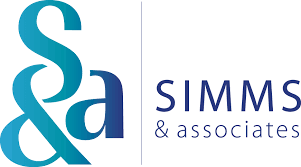In the fast-paced, competitive landscape of Workforce Management (WFM) systems, ensuring that businesses maximise their software investments is crucial. Statistics indicate that a staggering 94% of businesses do not fully leverage the software they purchase (McKinsey & Company). At Simms & Associates, we recognise that thorough pre-sales activities and accurate estimations are the foundation of successful software implementations.
As a Services Architect at Simms & Associates, I am often involved at the pre-sales stage and work closely with the customer during the discovery phase. It is important for me to get to know our customer, gather and document all their requirements, and develop an understanding of their needs to ensure a maximum return on investment.
Here’s why thorough pre-sales activities and accurate estimations are the secret weapon to avoiding costly IT disasters at a later stage:
Accurate Cost Estimation is Essential
Understanding the financial commitment before initiating a new WFM system or upgrading an existing one is vital. Accurate cost estimation is not merely about assigning a price; it enables informed decision-making.
Companies invest heavily in software solutions, and without precise cost estimations, they risk budget overruns and underutilised resources. At Simms & Associates, our pre-sales activities ensure that we provide detailed and accurate cost estimates, allowing clients to allocate resources effectively and avoid unexpected expenses that contribute to software underutilisation.
Read this review from one of our customers
Defining the Project Scope Clearly
Pre-sales discussions are vital for defining the project scope accurately. Early engagement with clients helps us understand their requirements, business goals, and desired features. This clarity ensures that the WFM system aligns with their specific needs and expectations. Businesses often fail to leverage their software because the solutions do not fully address their unique challenges. By clearly defining the project scope, we ensure that solutions deliver the expected value, preventing the software from becoming another underutilised investment.
Identifying and Mitigating Risks Early
A thorough pre-sales process allows us to identify and mitigate potential risks that could derail the project. For instance, overlooking integration with other third-party systems can lead to delays and increased costs, contributing to the software not delivering its full potential. By addressing these risks during the pre-sales phase, we can proactively develop strategies to mitigate them. This proactive risk management ensures the project stays on track and the software delivers the anticipated benefits, enhancing the overall return on investment and reducing for need for change requests at a later stage.
Establishing Defined Timeframes
Defined timeframes are integral to our estimation process. Establishing specific timelines for project milestones during pre-sales ensures that customers clearly understand the expected project duration. This transparency sets realistic expectations and aids in planning for training needs and system adoption. A significant reason why businesses do not fully leverage their software is due to inadequate preparation and unrealistic timelines. By providing clear timeframes, we help clients prepare better, ensuring a smoother implementation process and more effective use of the software and their resources from the outset.
Read this review from one of our customers
Conclusion
The high percentage of businesses not fully leveraging their software investments underscores the critical importance of thorough pre-sales activities and accurate estimations. At Simms & Associates, we prioritise these aspects to ensure our clients receive maximum value from their WFM systems. By focusing on cost estimation, scope clarity, risk mitigation, and defined timeframes, we set the stage for successful software implementations. This approach prevents wasted investments and ensures our clients fully utilise the capabilities of their WFM systems, leading to enhanced operational efficiency and a better return on investment.
For further reading, check out sources such as McKinsey’s report on project management and software utilisation (Workamajig) (TeamStage) (McKinsey & Company).
Don’t just take our word on this, see what our customers tell about us.
